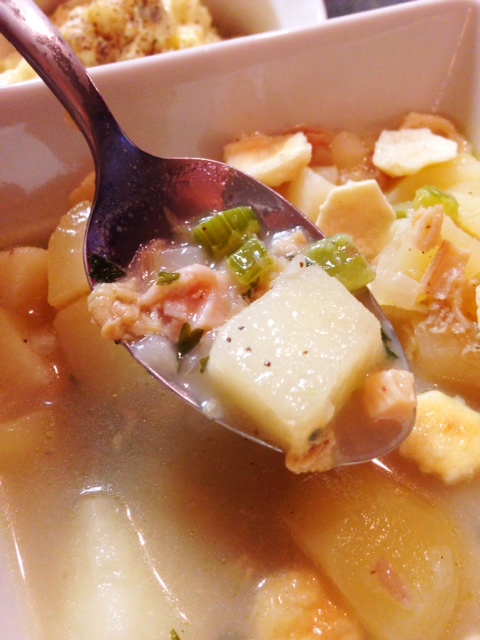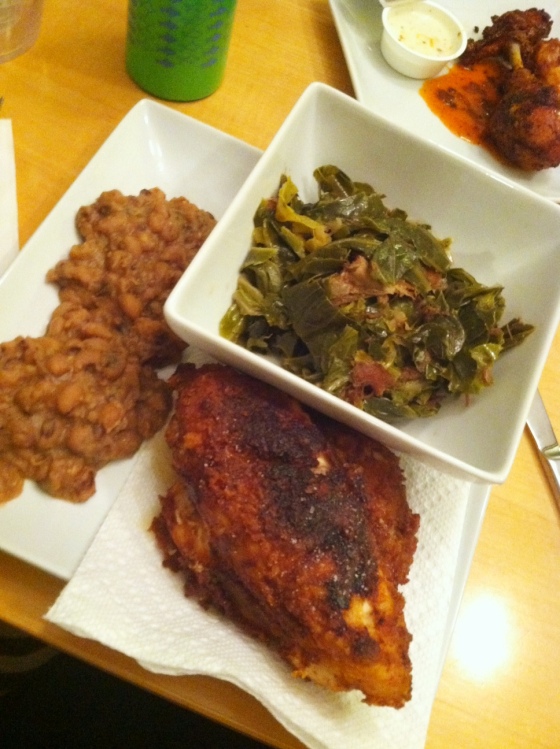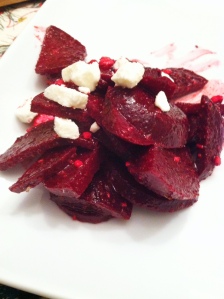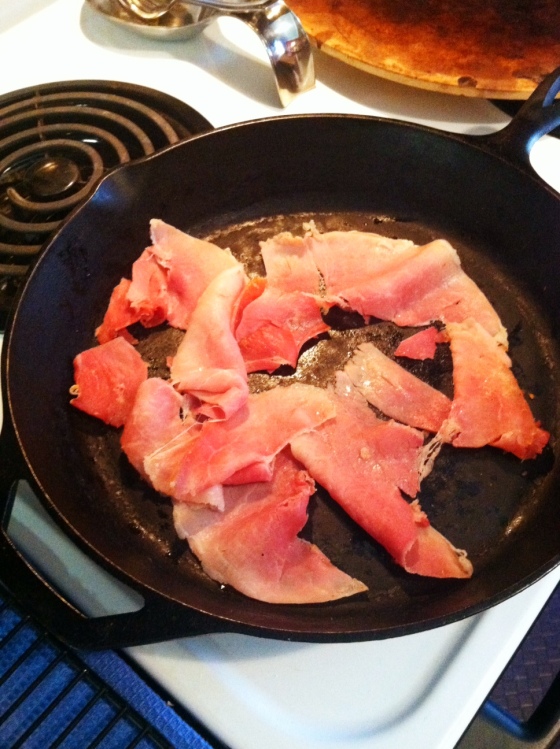I’m from North Carolina so naturally I am a huge fan of Barbecue. And while you can’t beat hardwood smoked whole hog, for most of us that is not an option in our own kitchens (although I am still trying to convince Jeremy that there is room beside the hot tub in the backyard for a full-hog sized smoker). But there is another option and it comes in the somewhat unexpected form of a slow cooker. Yea, there are some hard-core BBQ fans out there that will tell you that if it’s not cooked over a real hard wood fire then it’s not technically barbecue, and on some historical points I will agree with them, but for all intents and purposes this recipe gets the job done. But make no mistake – while you don’t have to cook a whole hog in a split metal garbage pail over a hickory fire, you do have to commit yourself to two days of cooking, although most of it is pretty hands-off. You also have to commit yourself to your house smelling like pork for two days. Something I do not mind at all, but which some of you may find displeasing.
Step 1: Purchase a pork shoulder. These are also often called pork picnics, or pork butts. I usually go for a 3-4 pounder because I’m not looking to cook for a huge crowd. Go bigger if you need to, just make sure it will still fit inside your slow cooker.
Step 2: The night before you want to eat the Q, put the shoulder into the crock pot with at least a liter of cola or as much as you need to just about cover it. You can use any kind of cola. I used Dr. Pepper, but I’ve also used R C Cola, Coke, Pepsi, whatever. Turn the cooker on low and let it sit overnight.
Step 3: In the morning, remove the pork from the cola, pour the cola out and wipe out your slow cooker crock. The pork will be falling apart, so make sure you get all the meat out before you toss the cola (IE- don’t throw the pork baby out with the bath water). Let the pork cool for a bit, then begin to remove as much of the fat as you can from the meat. This will require tearing the meat into large chunks. (See photo collage, upper right hand corner). Once you’ve gotten as much fat off as possible (and bones if you’ve purchased a bone-in shoulder), put the meat back into the crock pot and shred with two forks until you’ve reached the consistency and chunkiness you like. You can also chop the meat after it’s shredded if you like that texture better. Chopped vs. Pulled is a completely personal preference; the value of one over the other I will not weigh in on although many people have strong opinions here.
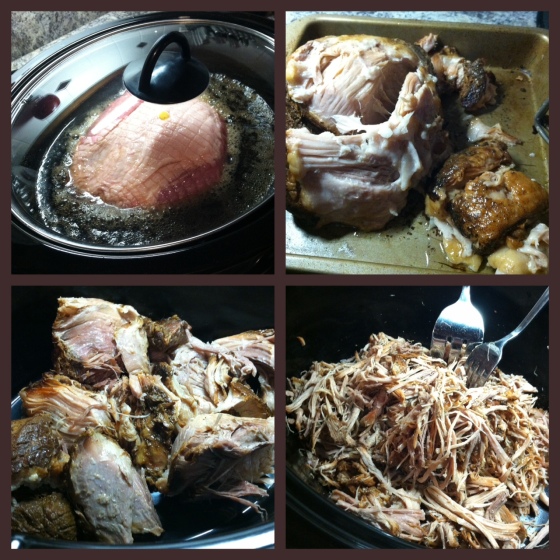
Step 4: Make your sauce. This is where personal preferences turn into regional BBQ wars. You are certainly welcome to go to the store, buy a pre-made jar of BBQ sauce and dump it onto your meat at this point. That is totally fine if you have a particular brand that you really enjoy. However, I have never ever ever purchased a sauce from the store that adequately represented real Eastern Carolina BBQ Sauce, so I make my own. I cannot even begin to give you real measurements of anything, but I will tell you it includes a little to a lot of the following things: apple cider vinegar, molasses, red pepper, black pepper, hot sauce, salt, garlic and onion powder, ketchup, and (secret ingredient alert!) liquid smoke. Yup. If you can’t cook it over real smoke and enjoy that hard-charred meat bark, liquid smoke will at least give you a hint of that flavor. The sauce I make looks something like this when I’m done:
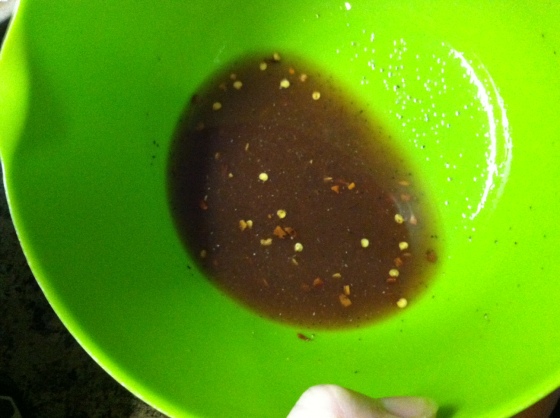
Secret Sauce
Possibly not at all like the BBQ sauce you know and love. Again, this is very regional. If you love some KC Masterpiece, I’m not judging (yes I am), just use that instead and sauce it to your liking. It should look something like this, or like something completely different if you’re using a different kind of sauce:
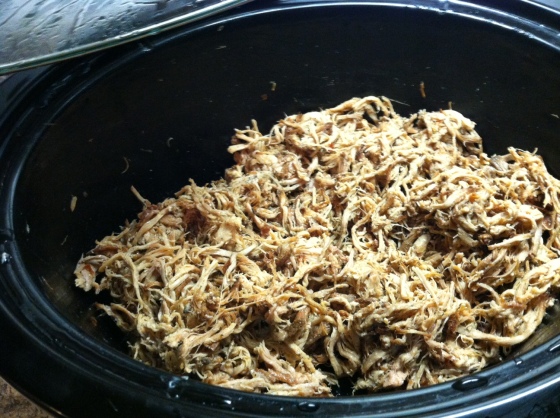
This is what Eastern NC sauced BBQ looks like.
Step 5: Leave the meat in the crock pot with the sauce on low during the day. When you’re ready for dinner, check the meat, see if it needs any more sauce, then serve how you like. Again, this could be a multitude of ways, but I see no reason why you wouldn’t want it on a soft bun with home made coleslaw and a good dose of hot sauce:

Heaven.
I’ve taken this BBQ to several events and never get less than a dozen compliments on it. Even though it takes a good 20 hours, it’s worth it, and really is very very easy when you break it down. And the more you make it, the better you’ll learn how you like your sauce, or you’ll come up with other fun combinations. I’ve seen a recipe done like this but instead of BBQ sauce, a Cuban marinade was used, then the pork was made into Cuban sandwiches with ham and pickles and oh jeez, that’s going to have to be another blog . . .
What is your favorite kind of BBQ? Tennessee? Texas? Arkansas? Western NC? Let’s fight about it!


